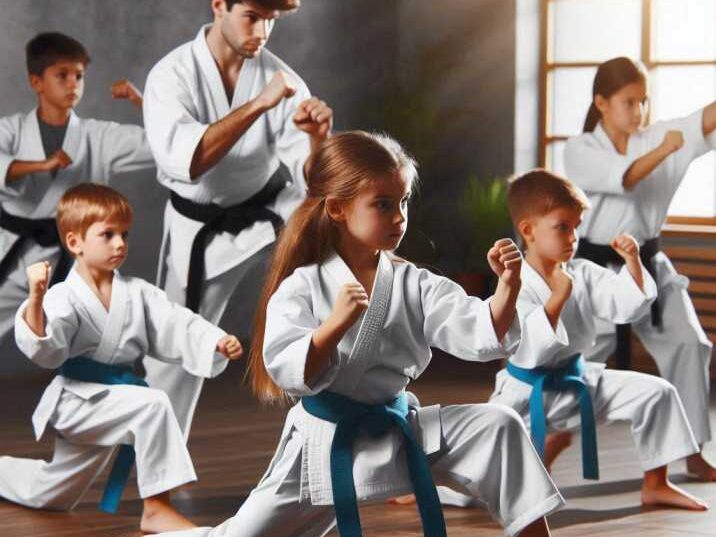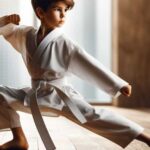Introduction
Table of Contents
Martial arts are more than just kicks and punches. They teach focus, discipline, and confidence—skills that help kids succeed in school and life. But not all martial arts classes are the same. I teach self-defense and martial arts differently because every child is unique. My goal is to help each student grow, both physically and mentally.

Table of Contents
- Understanding My Unique Teaching Approach
- Benefits of Martial Arts for Kids
- How My Teaching Enhances Focus and Discipline
- Building Confidence Through Martial Arts
- Real-Life Success Stories
- Frequently Asked Questions
- Conclusion
Understanding My Unique Teaching Approach
Personalized Learning
Every child learns at their own pace, and that’s okay. Some pick up moves quickly, while others need a little more time and practice. I pay close attention to each student’s strengths and challenges, adjusting my lessons so they feel successful and stay motivated. This approach helps kids enjoy learning and build confidence step by step.
Emphasis on Life Skills
Self-defense is just one part of martial arts. I also teach kids important life lessons like respect for others, patience during challenges, and teamwork in practice. These values don’t just help in class—they also help children at home, in school, and with friends. Martial arts becomes a tool for becoming a better person.
Safe and Supportive Environment
Kids learn best when they feel safe and encouraged. That’s why I create a welcoming space where every student feels seen and supported. I teach my students to cheer each other on, not compete or criticize. This positive atmosphere helps build strong friendships and a team spirit.

Benefits of Martial Arts for Kids
Martial arts offer numerous benefits that extend beyond physical fitness.
Improved Focus
Martial arts training helps kids practice staying focused on one task at a time. They learn to listen carefully, follow directions, and stay present during each move. Over time, this focus carries over into the classroom, helping them concentrate better on schoolwork.
Enhanced Discipline
Success in martial arts comes from consistent practice and following routines. Kids learn that showing up on time, respecting their instructors, and working hard leads to progress. These habits build strong self-discipline that benefits them in all areas of life.
Boosted Confidence
Every time a child learns a new technique or earns a new belt, they feel a sense of pride. This builds confidence and encourages them to try new things without fear of failure. Martial arts shows them they are capable of more than they think.
Physical Fitness
Martial arts classes involve a lot of movement—kicking, punching, stretching, and balancing. This helps improve a child’s strength, flexibility, balance, and coordination. It also encourages a healthy lifestyle from a young age.
How My Teaching Enhances Focus and Discipline
Structured Classes
I design every class with a clear routine—warm-ups, technique practice, and cool-downs—so students know exactly what to expect. This helps them stay on track and avoid distractions. A predictable structure builds good habits and improves concentration.
Goal Setting
Whether it’s learning a new kick or earning the next belt, I encourage students to set small, reachable goals. Working toward these goals teaches them to stay committed and focused. It also gives them a sense of purpose every time they train.
Positive Reinforcement
When students try hard or improve even a little, I make sure to celebrate their effort. Recognizing progress boosts their self-esteem and encourages them to keep going. This positive approach creates a fun and supportive learning environment.
Building Confidence Through Martial Arts
Overcoming Challenges
Some techniques are tricky at first, and that’s okay. I guide students step by step and remind them that mistakes are part of learning. With time and effort, they see improvement—and that helps them believe in themselves.
Public Demonstrations
Students get chances to show their skills in front of family and friends. These moments build courage and confidence, especially for shy kids. Performing in front of others also helps with public speaking and stage presence.
Peer Support
In my classes, students don’t compete—they support each other. They practice together, cheer each other on, and celebrate successes as a team. This teamwork helps kids make friends and feel like they belong.
Real-Life Success Stories
Emily’s Transformation
Emily was shy and struggled with focus. After joining our classes, she became more attentive in school and started participating in class discussions.
Jake’s Journey
Jake had difficulty managing his energy. Martial arts taught him self-control, and his teachers noticed a significant improvement in his behavior.
Conclusion
Teaching self-defense and martial arts differently means focusing on the whole child. By personalizing instruction and emphasizing life skills, I help students become confident, disciplined, and focused individuals. These qualities not only make them better martial artists but also prepare them for success in all areas of life.
Frequently Asked Questions
Q1: At what age can my child start martial arts?
A1: Children as young as 4 can begin training, with programs tailored to their developmental stage.
Q2: Is martial arts safe for kids?
A2: Yes, with proper instruction and safety measures, martial arts is a safe activity that promotes physical and mental well-being.
Q3: How often should my child attend classes?
A3: Attending 2-3 classes per week is ideal for consistent progress and skill development.
Q4: Will martial arts make my child aggressive?
A4: No, martial arts teach self-control and respect, reducing aggressive behavior.
Q5: Can martial arts help my child with academic performance?
A5: Yes, the focus and discipline learned in martial arts often translate to better concentration and performance in school.


